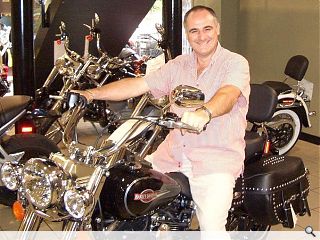Crowd Dynamics
7 Apr 2011
Britons might be renowned for their queuing civility but bucketfuls of patience haven’t proved sufficient to prevent a number of crowd related disasters from occurring on our shores, from Ibrox to Hillsborough. With the Olympics and Commonwealth Games now figuring large in everyone’s thoughts Urban Realm decided to delve a little deeper into a diverse field which marries architecture, mathematics and psychology.
Three might be a crowd in popular parlance but what is an everyday nuisance for most can become a deadly dance with death for some when a gathering of individuals turns its thoughts from party to panic. Caught in the middle of this phenomenon is Professor Keith Still, Aberdeenshire mathematician, Harley Davidson fanatic and collector of dodgy signage. Still is the world’s foremost authority on the science of crowd dynamics and someone anyone who finds themselves in a tight spot can count on.Still first became fascinated by crowds after becoming stuck in one – for four hours. A prolonged period of time in any environment its duration was considerably extended when experienced at the top of the stairs outside gate C of Wembley Stadium. This first, unwitting, experiment in crowd dynamics took place on the occasion of a Freddie Mercury tribute Concert for Aids Awareness back in 1992. This period of enforced idleness turned out to be the perfect demonstration of the seemingly arbitrary nature of crowd flows, as Still observed some Queen fans proceeding relatively unhindered toward their seats, whilst others (an appropriately still Still amongst them) looked on enviously. Rather than use his predicament to curse his luck however Still utilised the time instead to mull over the physics of crowd dynamics which had conspired so effectively enforce an extended period of loitering in an otherwise unremarkable stairwell.
Still’s insight that day was that though crowd behaviour is complex and inherently chaotic it is the geometry of spaces which have the most effect on patterns of movement as people break up and reform around obstacles, leaving wakes which are repeatable irrespective of the event or composition of the crowd. Counter-intuitively Still observed that barriers, in the right places, can actually improve crowd flow as the resulting ‘wakes’ caused by their introduction instigate a cascade of openings in the crowd back down the line to allow slow (but steady) egress via long free flowing chains of people. Modelling these patterns in the language of mathematics Still observed iterative and recursive mathematical shapes powered by real world behaviours, a phenomenon Still dubs “XenoFractals;” geometric shapes which begin as chaotic forms but self organise into bizarre but beautiful shapes and swirls.
Speaking to Urban Realm Still observed: "When I started, in the early 90s, there was no formulated science on crowds. Crowd-modelling was based on analyses that treated masses of people like fluids. But people don't behave like that, they don't move in neat, linear ways." The software Still has developed to compute these strange forms is called Myriad II, it allows architects to model crowd flows in buildings both real and under design by experimenting with different configurations of passages, doors and barriers to see what would happen in an emergency situation before a brick has even been laid, be that terrorist attack, or a crowd of frustrated Freddie Mercury fans.
”Myriad II is a suite of modelling tools I use on major projects - designed by ourselves for modelling spaces, crowds, flows and highlighting risks,” explains Still. The software takes data from sources such as Google Earth, CAD designs and site surveys and uses it to quantify the variables that influence crowd behaviour: the individuals' objectives, the rate at which they move, the constraints that restrict movement, and the time it takes for people to assimilate and react to the available information. Still can then use that data to test how different environments affect a crowd's movement. Eschewing the impossibly complex mathematics of modelling crowds of 100s of free willed participants the software instead focuses on the individual, applying simple attributes to each person the automatons can be programmed to navigate through space toward their goal without bumping into any other virtual bystanders. Still notes: “I'd state that individuals have a high degree of uncertainty - but the collective, the crowd has boundaries and constraints that make it, to a degree, predictable.”
The transition from an orderly queue to a deadly crush can be predicted, as you might expect, on the volume of people traversing a confined space: “It's more related to density and excitation - typically above 6 people per square metre” says Still, noting that for moving crowds it's less, at around 2-3 people per square metre. In general this equates to a flow rate of 82 people per minute as an upper maximum. It's more about the density - so it's space AND people - for example a 45m wide entrance to the Jamarat Bridge had a lot of space for 100,000 people but NOT for 750,000 people.”
This particular bridge was a notorious bottleneck in the city of Mecca, Saudi Arabia, scene of an annual ritual in which millions of people participate in a series of symbolic rites. Unfortunately the city was also the setting for a decidedly unholy death toll following a series of disasters, all stemming from excessive crowds, leading to a near annual series of mass fatalities. Most recently this saw 346 people crushed to death in 2006 but that followed 251 casualties in 2004, 118 in 1998 and 270 in 1994. This growing tally finally prompted Saudi Arabia’s King Fahd to instigate a £700m remodelling of the bridge in 2010, a process in which Still’s insight proved instrumental.
“There are three basic types of crush - surges (static), surges (dynamic) and slow build up (front of stage)” explains Still. Crowds are constantly monitored by security/stewarding companies to assess "what may happen next". I wrote an outline in the "How to Survive a worst case scenario" for concerts and the New Year Sales....
Barriers, appropriate signage and information systems all aid.” Still categorises crowds within two bracketed behaviours, “normal” and “emergency”. Both types of crowd encompass three clear phases; ingress, circulation and egress and both can be influenced by key three factors; design, information and management. "Organisers need to tailor the design of their space, the information people have and how they manage a crowd to keep density low at key positions," Still says, adding. "The primary cause of injury and accidents is failing to understand how design, information and management influence a crowd."
Utilising Myriad II Still was able to calculate that the existing bridge, with a single entrance ramp just 45m wide, could accommodate a flow rate of 100,000 an hour. But that it was actually receiving up to 135,000 people crossing per hour. In response Still advocated a relaxation in the scheduling of events to limit crowd surges whilst advising a relocation of the sites exits to mitigate crowd direction changes. This advice has been taken on board by the authorities, with the bridge being transformed into a five-storey, 950-meter-long permanent structure that can now handle 300,000 pilgrims per hour. There are 11 entry points and 12 exits, and further access points, including helipads, where officials can intervene in emergencies. The enhanced structure now also incorporates multiple one directional floors so no pilgrims need manoeuvre against the prevailing flow whilst exit ramps are now wider than the entrances, ensuring crowds can disperse quickly.
So are crowd dynamics the same for people as traffic, wildebeest or financial transactions? “Similar - traffic yes, different physics of course,” Observes Still. Adding: “Wildebeest - not my speciality but flocking/herding is the same mathematical structure, financial transactions. Smith developed an algorithm in 1996 to model foreign exchange data and crowd dynamics based on nothing more than a hunch that that the crowd was reacting to the financial environment in the same way that crowds react to the physical environment.
“People are bipeds so have a limit to motility (speed/acceleration) they typically move towards, away from or alongside objectives (have some idea of where they are going) and take time to assimilate information as it changes in the environment. We are all bounded by a range of constraints.” No crowd simulation would be complete however without the incorporation of mobile phones, Twitter, Facebook and the like as Still notes: “It's similar to the propagation of information in the financial markets - sometimes the crowd can over react to information.
With this new found power to delve into what were once intractable problems a window has been opened to a new way of looking at the world with principles which can be applied to be applied to identify people of import within not just a ‘crowd’ but a community? “Yes - that's part of a network analysis - similar to the "influences" in financial modelling” Still replies. “There are two key elements - connectivity and susceptibility - to go much deeper into these topics would require a few hours though....”
Clearly the science of crowd dynamics is still in its infancy but with a plucky Aberdonian biker on the case we can all look forward to a safer (and less frustrating) world.
|
|
Read next: Boiling Point
Read previous: Craigshill Learning Centre
Back to April 2011
Browse Features Archive
Search
News
For more news from the industry visit our News section.
Features & Reports
For more information from the industry visit our Features & Reports section.





